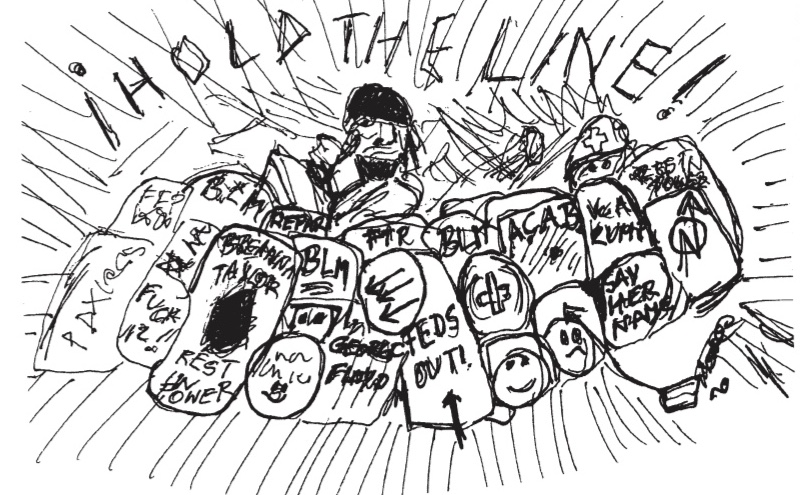
There is no doubt that the Black Lives Matter protests over the last six months have been historic. For many folks from small towns and suburbs, this was the first social justice protest they had seen or participated in. The collective fire was lit and we saw many BIPOC (Black, indigenous and people of color) organizers and activists funnel that energy into creating grassroots organizations for racial equality where they did not exist before. All of us who work with Slingshot saw each other at the huge protests across the Bay — at times choking on gas while marveling that this was happening on such a scale, everywhere all at once.
Protesting against racist police brutality is not new. It is what animated the Black Panther Party in the 1960s. The Rodney King uprisings in 1993 were also national, huge and based on videotaped police abuse. That was almost 30 years ago and police violence still disproportionately targets BIPOC. There is such a long list of Black “say their names” — stretching back for years and years. This movement continues the fight and legacy of radical movement work led by Black people.
As the months progressed and the demonstrations have decreased, we must ask ourselves how we can stay plugged into the struggle. Especially for white folks who posted, donated, and attended protests — how does this moment transform from a secular self-gratifying time into a commitment to anti-racist work?
For many non-Black folks, the past few months have revealed their own complicity in the systems that kill Black people. Social media flooded waves of info-graphics about different facets of anti-blackness. Yet the work can’t stop there. There are only so many words that can fit on a screen and it would be idealistic to say that all of our political education could come from engagement on social media.
Race is an arbitrary social construct, but what comes out of it — racism, white supremacy, discrimination and oppression — is real and complex. Below what is visible on the surface are layers upon layers of a historical process that all find their center in anti-blackness. The murders of unarmed Black and Brown folks by police are only one culmination of this incredibly pervasive system. This system is built into every single aspect of society. If we truly want to see Black liberation we need to be plugged in for more than a few weeks.
To continue in the struggle, folks have to become comfortable with being uncomfortable. Acknowledging your position in perpetuating anti-blackness is key to understanding how to dismantle it. For white folks, this means recognizing and accepting how you fully benefit from white supremacy. For non-Black people of color, this work is similar, but not the same. You recognize the oppression under which you exist, but you also must accept that you too benefit from your proximity to whiteness. This self-analysis is also not confined to race, and must include analysis of gender, sexuality, and class to be meaningful.
The education that we take upon ourselves has to transfer over into the discussions we have with family and friends. These discussions aren’t comfortable either, but are necessary. If we as non-Black folks fail to do that labor — who are we leaving it to? It is up to all of us to step in and continue this (re)education.
With all the physical, emotional and intellectual labor that has been provided by BIPOC, we owe it to everyone to put in the work (on) ourselves.
Participation in anti-racist work is participation in transformation of the system. This takes no set path and for those of us who have not done this work before, it can be pretty daunting to try to find a practice when we have been so conditioned. Aside from individually educating yourself, there are various other ways you can join the movement. Other issues like gender equity, climate change, houselessness, immigration, and everything else ALL intersect with anti-racist work! The options of how to plug in are truly limitless!
Anti-racist work is not optional; silence is complicity with anti-blackness and white supremacy.
